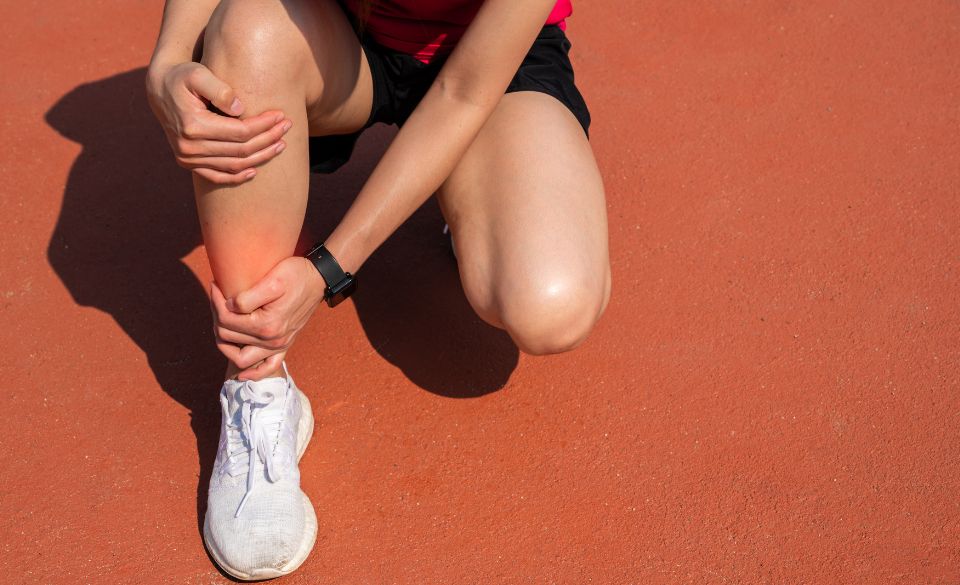
What Exercise Can I Do with Shin Splints?
Page Contents
So, you’ve been hit with the dreaded shin splints, and now you’re worried that you’ll have to hang up your cycling shoes or running sneakers for good. Fear not, my fellow fitness enthusiasts! While shin splints can be a real nuisance, they don’t have to put a halt to your exercise routine altogether. There are plenty of low-impact and alternative exercises you can do that won’t aggravate those tender shins. Let’s explore some gentle yet effective workout options that will keep you active and on the road to recovery.
Understanding Shin Splints
Before we dive into the exercises, let’s quickly recap what shin splints are and how they occur. Shin splints, or medial tibial stress syndrome, refer to pain and inflammation along the front of the shinbone (tibia). They are usually caused by overuse or repetitive stress on the muscles and connective tissues surrounding the shin. High-impact activities like running and jumping are common culprits, but even cycling, with its repetitive pedaling motions, can sometimes lead to shin splints.
Exercises to Do with Shin Splints
Experiencing shin splints doesn’t mean you have to give up exercising altogether. There are several low-impact and shin-friendly exercises that you can do to stay active and maintain your fitness level while allowing your shins to heal. Here are some exercises to consider:
Swimming: Swimming is a fantastic full-body workout that is gentle on the shins. The buoyancy of the water reduces impact on your lower legs while providing resistance to strengthen your muscles. Try different strokes and intensities to keep your swimming routine varied and enjoyable.
Cycling (Stationary or Road): Cycling is a low-impact exercise that can be shin-splint friendly if done with proper form and bike fit. Consider using a stationary bike or adjusting your road bike’s position to minimize stress on your shins. Start with light resistance and gradually increase as you feel comfortable.
Elliptical Training: The elliptical machine provides a great cardiovascular workout without the impact on your shins. It simulates a running motion while keeping your feet in constant contact with the pedals. Adjust the resistance and incline settings to match your fitness level.
Rowing: Rowing is an excellent full-body workout that engages your arms, legs, and core muscles. The fluid motion of rowing is gentle on your shins while providing a challenging workout. If you’re new to rowing, consider taking a beginner’s class to learn the proper technique.
Yoga: Yoga can improve flexibility, balance, and strength without putting pressure on your shins. Focus on poses that stretch and strengthen your lower body, such as downward dog, warrior poses, and seated hamstring stretches.
Pilates: Pilates is a low-impact exercise that targets core strength and stability. Many Pilates exercises can be modified to avoid putting strain on your shins. Seek out a Pilates instructor who is knowledgeable about modifying exercises for those with shin splints.
Upper Body Workouts: While your shins are healing, take the opportunity to focus on upper body strength training. Exercises such as bicep curls, shoulder presses, and tricep dips can help you maintain your strength and fitness levels.
Seated or Recumbent Exercises: If your shins are particularly sensitive, consider exercises that allow you to remain seated or in a recumbent position. This could include seated leg presses, recumbent biking, or using resistance bands for seated upper body exercises.
Remember, it’s crucial to listen to your body and not push through any pain or discomfort. If an exercise exacerbates your shin splints, stop immediately and opt for a different activity. As your shins heal and you gradually return to higher-impact exercises, be sure to ease back into them slowly to prevent further injury. Consult with a healthcare professional if you have any concerns or need guidance on your exercise routine. With patience and proper care, you’ll be back to your regular workouts in no time!
Studies and Expert Opinions
Studies have shown that incorporating low-impact exercises can be beneficial for individuals with shin splints. A study published in the Journal of Orthopaedic & Sports Physical Therapy found that a combination of stretching and strengthening exercises can effectively alleviate shin splint symptoms. The study recommended exercises targeting the calves, hamstrings, and hip muscles to reduce the load on the shins.
Sports medicine experts also suggest focusing on non-weight-bearing exercises during the initial phase of shin splint recovery. Activities like swimming, cycling, and elliptical training can maintain cardiovascular fitness and muscle strength without exacerbating shin splint pain.
Listen to Your Body
While these exercises can be suitable for most individuals with shin splints, it’s crucial to listen to your body and adjust your routine accordingly. If any exercise causes pain or discomfort, stop immediately and allow your shins to rest. Always consult with a healthcare professional for personalized advice and treatment options.
Conclusion
In conclusion, shin splints don’t have to put a stop to your exercise routine. By incorporating low-impact and alternative workouts, you can stay active while giving your shins the chance to heal. Swimming, cycling with proper bike fit, elliptical training, yoga, and Pilates are excellent options to maintain fitness and strength without aggravating shin splint symptoms.
Remember, shin splints are a signal from your body to take it easy and give yourself time to recover. Be patient, and gradually ease back into higher-impact activities once your shins have healed. If you experience persistent or severe pain, don’t hesitate to seek professional medical advice.



